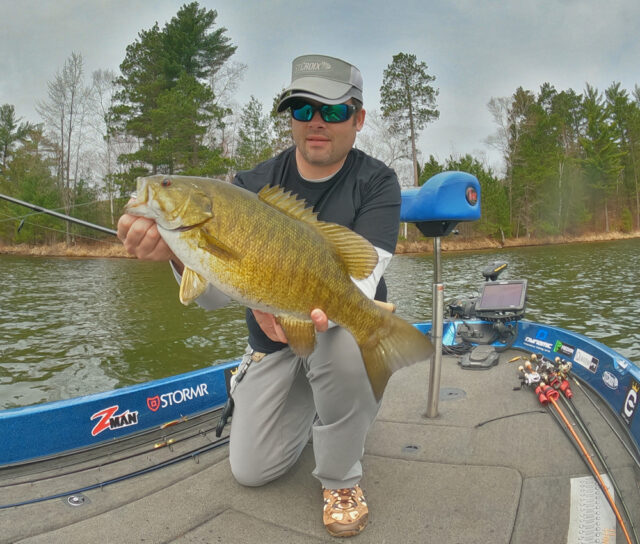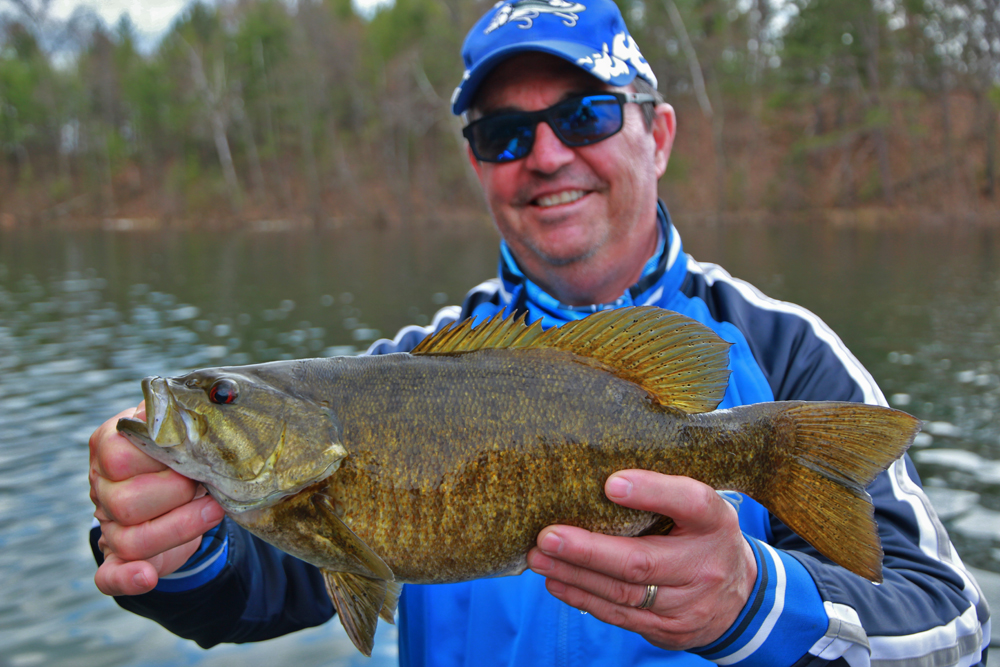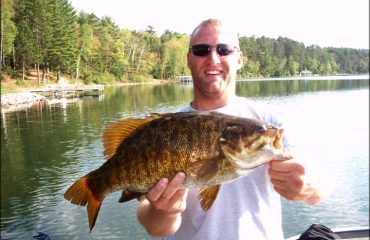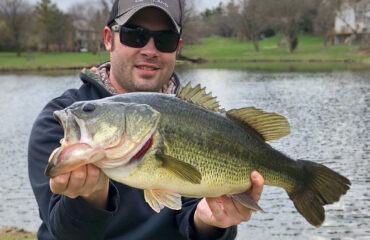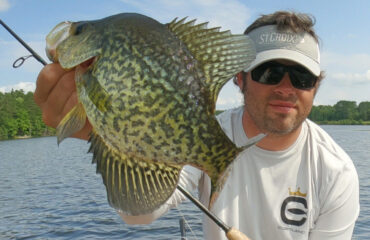LOCATION! LOCATION! LOCATION!
After ice-out, smallmouth undertake structural migrations from wintering sites to their staging locations, utilizing the lake’s contours and breaklines as their trail in order to reach these temporary destinations. Where they stage and hold until water temperature becomes ideal for invading the shallows will often be situated within a close range from their spawning sites. The same staging locations are re-used by smallmouth annually, and we must revisit them every spring too.
Early in May, and greater emphasized when water temperature is holding in the mid 40’s, seek deeper water first, targeting breaklines at the 10 to 20 ft. level. Look for mid depth structure and underwater holding areas that could be boulders, cribs, wood, and sand bottom. Then as water begins encroaching 50, proceed to staging sites which can be in shallower depths of 5 to 10 ft.
On a lake map, identify entrances of shallow bays, shoreline points, sand bars, shoals, flats, and any isolated obvious shallow structure that has been created by the shape and terrain of the lake. Smallmouth will favor rock, boulder and wood habitat, with a bottom of sand and gravel or rock in any combination at these locations. Then pursue these locations if side imaging confirms presence of fish, the necessary habitat and structure, as well as perfect bottom type. Exposure to sunlight is paramount to the productivity of these areas. If the lake isn’t warming, these spots will be due to sunlight beating down on them. Also important, rock shoals, sand bottom, and wood are the best heat conductors. Their presence on top of a shallow structure will make a high percentage location even better.
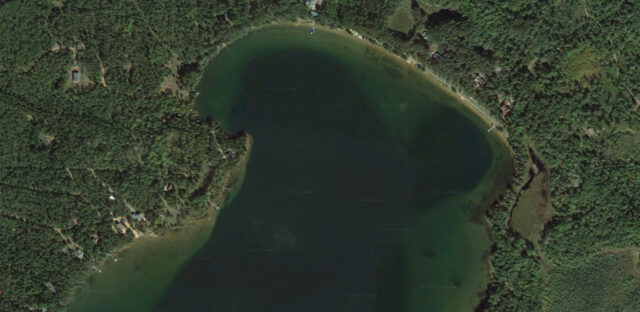
When staging sites are located and the pattern gets replicated throughout the entire lake, and others you might visit later that day, 20 to 40 fish days can be accomplished. On the other hand, many northwoods lakes contain few numbers so best yet you can catch a handful of giants. Who could complain!
If smallmouth aren’t staging in cold water, they could also be holding up tight in the extreme shallows. Sand pockets, isolated beaches, and shorelines with exposure to southern skies conduct heat. Smallmouth using these locations will proceed to lie on bottom, absorbing every ray. Additionally, laydowns and shoreline wood will attract fish as well. It’s remarkable to observe how smallmouth congregate and pin themselves to shoreline wood that may in a foot of water. Most smallmouth basking on these underwater microwaves are spooky and neutrally behaved, or can be negative uncatchable. But you’d be surprised by the number of desirable 3 to 4 pounders that can hold and lay in inches deep water just to absorb heat when nothing else is warming.
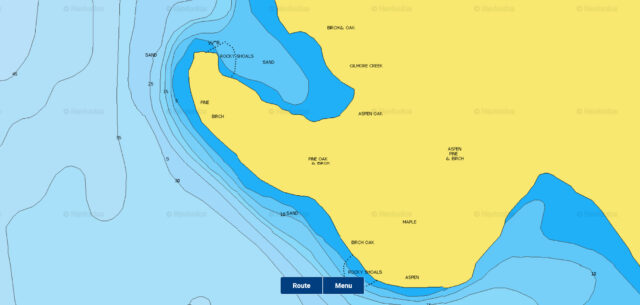
During late fall and winter, 90% of smallmouth are in 10% of the lake. Early spring fishing adheres to this principle too. Majority of the smallmouth you will catch in spring are located at, or near, staging sites. At this time, fish are still moving and schooling together in heavy concentrations until they disperse and settle on spawning sites.
Most smallmouth anglers are bank beating and covering water in spring. While it’s a very successful strategy during the spawn season when a high percentage of the lake’s bass population invades the shallows, it’s the worst strategy for pursuing staging fish and time management purposes.
In May, my clients and I aren’t the only boat smallmouth fishing. We have company and competition on most lakes every day. While we target only these high-percentage locations and only a small fraction of the lake, most other boats don’t know of these staging sites and high percentage locations, and are combing every mile of shore length. Proceeding to miss feeding windows, anglers then conclude in disgust their day was poor. When smallmouth are staging and concentrating on only a small scattering of precise locations throughout an entire lake, a high percentage of the lake is desolate and empty.
Location always precedes strategy in my boat, and this cold water scenario is no exception. On all smallmouth lakes I fish, we solely visit my milk run of structure routes and staging sites, and camp on them.
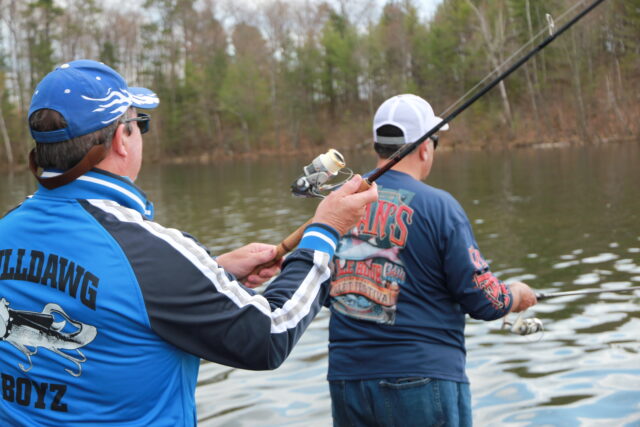
This slow method of boat control and spot locking on specific areas enables us to fish meticulously and efficiently, covering all possible casting angles and approaches. We will stay atop these locations 15 to 30 minutes at a time, then revisit again throughout the afternoon in hopes for more rapid feeding windows. Feedback with suspending jerkbaits and slow rolling swimming plastics is usually had within the first 5 minutes targeting these structures. When not feeding, smallmouth will be inactive but catchable, lying on bottom. We must also fish slowly because May feeding windows are rapid but short lived, occurring multiple times throughout the day. Prioritize midday and afternoon hours. The best fishing is expected to happen during periods of sunlight, and when water temperature peaks for the day.
I’ve established the fact that good smallmouth lakes have many staging locations where fish will gather and hold at until water temperature and timing is right for them to proceed shallow. Also, they will visit these locations annually just like they traditionally do for their spawning and wintering sites. Establish a milk run of staging sites on every lake, and you will be revisiting those lakes and locations every May just as my boat does.
Remember, smallmouth revisit the same staging locations, spawning sites, and wintering holes annually. Additionally, their activity and behavior is a product of the environment surrounding them. When you can anticipate and know their seasonal locations, and the structural intricacies and hot spots of every lake, catching them and predicting bites can be made with accuracy.
